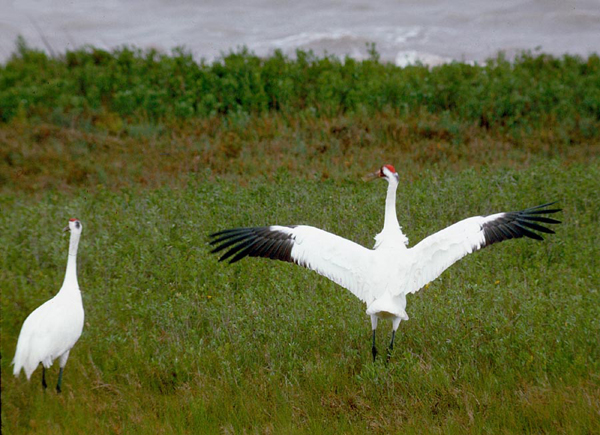- South Texas Students Meet Accordion Music Icons Los Tigres Del Norte In Edinburg Thanks To Khs America/Hohner Alianza Académica Initiative
- Fragile Planet Offers a Nighttime Wildlife Experience
- Falcons Soccer Off & Running
- Cameron County Receives Funds to Improve Two Parks
- Falcons Complete First Half of 32-6A
- School District to Help out Victims of California Wildfires
- Sand Castle Days Continued Despite Unexpected Weather
- Ready for District
- Discussion of Garbage Dumpster Rates, Agreements Between State & City on Highway Regulations, and More
- 31st Annual Shrimp Cook-Off is Right Around the Corner
World’s Last Flock of Wild Whooping Cranes Returns to Texas
- Updated: December 6, 2013

by John Michaelson/TNS
AUSTIN, Texas – The world’s last flock of wild whooping cranes is now arriving in Texas, as the endangered birds make their annual winter migration to the coast from northern Canada. The flock has been growing slowly and it now numbers around 300 – despite the troubles of five years ago, recalled Myron Hess, Texas Water Programs manager for the National Wildlife Federation.
“They had a fairly big setback in 2008 and 2009, when around 23 or more of the whooping cranes died during winter on the Texas coast during drought conditions,” Hess said, “but sort of generally, over time, the population has been growing slowly.”
Following the whooping crane deaths, The Aransas Project filed a lawsuit under the Federal Endangered Species Act. Hess said a court determined that the management of water in Texas was harming the birds.
“But that ruling by the federal district court is currently on appeal,” Hess said, “so basically right now any changes in management are on hold. There really haven’t been any changes made as a result of that ruling.”
Hess predicted that a ruling on the appeal could come at any time, adding that he hopes it will lead to the improved management of Texas water resources with wildlife impacts in mind.
“Here, we need to be managing it to help benefit the whooping crane, but it’s an issue all up and down the Texas coast as we’re taking more and more water out of our river systems and depriving the coast of fresh water inflows. We’re seeing impacts to species up and down the coast. We really have to do a better job of looking at the big picture,” he said.
The whooping cranes will winter around the Aransas National Wildlife Refuge until about March, before migrating nearly 2,500 miles back to northern Canada and their summer breeding grounds. In total, about 600 whooping cranes live in the wild and in captivity in North America – a major turnaround from the 1940s, when unregulated hunting and loss of habitat pushed the species to the brink of extinction.
More information about whooping cranes is available at www.nwf.org.
